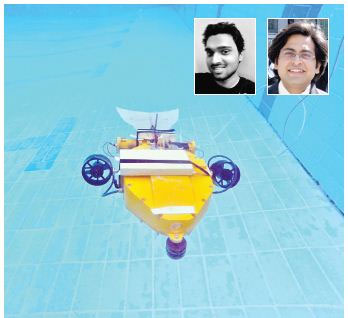Indias first bio inspired underwater robot
Posted on: 13/Jul/2016 2:30:56 PM

Sathosh Ravichandran, a student from IIT Madras has designed India�s first bio inspired underwater robot. He designed the new device with the help of his professor. The robot can be used for various operations like stealth observations in the military operations and to monitor the bio-environment in the sea. Named after the Sanskrit word for turtle, Duli is a robotic fish which has a biologically inspired caudal, or tail, fin and conventional rotary thrusters.
Santhosh is a second year student studying his MS in Machine Design. His professor Prabhu Rajagopal is part of the Department of Mechanical Engineering. Mr. Rajagopal is also the Director of Planys Technologies Pvt Ltd, Chennai. Speaking about the project, Mr. Rajagopal said, The remotely operated underwater vehicle can be camouflaged as fish. It can go undetected as nobody will be able to get a signature of it. The bio-inspired vehicle is the future worldwide and in the robotics, the trend is more and more bio-inspired. We want to design the robot with all the fins like in the fish which can go much deeper but its very difficult to control. The vehicle is difficult to control. Lot more research is required before making it commercially available.
When asked about his new robot, Mr. Ravichandran said, We moved into bio-inspired vehicles because we found that it is more efficient than the conventional vehicles. Soon we realised that efficient bio-inspired vehicles are not really manoeuverable. Then we came up with the idea to integrate both the conventional thrusters and bio-inspired propulsions for both manoeuvrability and efficiency. In nature, there is a lot of mechanisms we can copy. Only very few people in the world are working in the bio-inspired vehicles.
The efficiency of the conventional underwater vehicle is only around 40 per cent. This bio-inspired vehicle�s efficiency will be more than 60 per cent. I studied types of fish ranging from sharks to tuna before settling in on the tail fin. The type of tail we have come up with is having the resemblance of dolphins. There are vehicles with fish tails but this type of configuration using both the fish tail and conventional had not been done before. We also researched on how to make the fish fin to flap. We have got the provisional patent for design configuration and functionality of the vehicle. Our immediate goal is to make it more controllable and to make it commercially available.







